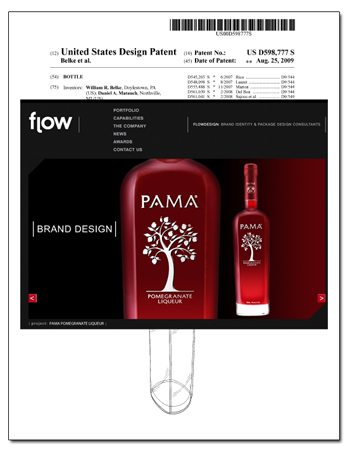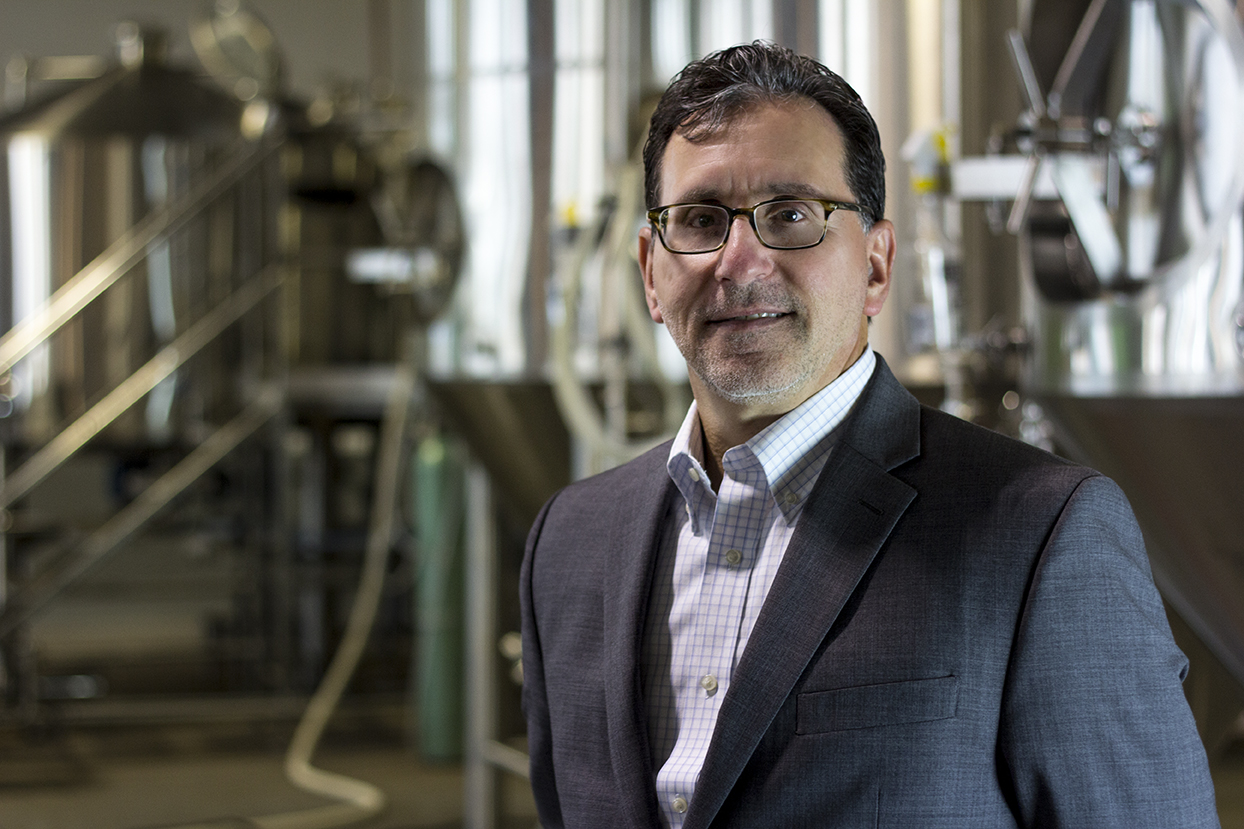
I got to talking with Dan Matauch the other day. He is a leading package designer in Michigan, at Flowdesign. I would have been impressed enough that he handled the design for Honest Tea. But he also handled Peet’s Tea, and Xango (aka Tiger Blood), and most of the designs really appeal to me. The list goes on and on, with Catdaddy Carolina Moonshine, Blue Ice Vodka, and the not-to-be-ignored Bawls and Stubb’s.
I was fairly surprised to see that Dan worked on the package design for Pama Pomegranate Liqueur — and it had some kind of patent. The March 2010 press release says:
To differentiate its product, PAMA Spirits turned to the expertise of Flowdesign to develop a custom bottle that was both unique and could be patented. … Flowdesign is a unique branding firm where experience is infused in both brand graphics and structural design. Founded in 1997, Flowdesign has led the brand design field in custom structural design with 10 prestigious GPI (Glass Packaging Awards).
It surprised me because the conventional wisdom seems to be that it’s normal to get a trademark related to alcohol beverages — but it’s not realistic to get a patent. The conventional wisdom may be too simple. We have covered several alcohol beverage-related patents in the past, such as Malt Liquor, Cubes, and Fruity Caps. To understand this better, I talked with Paul Hletko. Paul is perfect to dissect this because he happens to be a patent lawyer — and runs Few Spirits (of Evanston, Illinois). Paul explained as follows:
The beverage alcohol business is exceptionally competitive. Innovative companies are always trying to distinguish themselves to stand out from the competition, while others try to engage in “sincere flattery.” Brands can go a long way by distinguishing themselves with distinctive and unique propositions, but this can attract copying. After investing the time and money for uniqueness, it is rare that a brand welcomes a copycat. Protecting against these problems can be expensive short term, but prove highly valuable long term. One of the first strategies to protect innovation is the use of trademarks. However, trademarks are “usage” based and thus have certain advantages and disadvantages. In particular, it can be difficult to gain traction with a new trademark. This short post is not intended to address trademarks – another topic for another day.
Another potential strategy is to seek patent protection for unique and nonfunctional designs. In the beverage alcohol industry, this typically means unique bottle designs. For example, the PAMA brand secured design patent protection for a new bottle. D598,777 S claims this unique bottle shape, and gives its owner the exclusive right to make, use, or sell bottles with that design for the life of the patent. Other designs could also qualify for design patents, such as a unique bar top (Blanton’s) or the like. A design patent covers the design of an object, so long as the design is not mandated by the function. Additionally, the design must be novel as well as not obvious to one of ordinary skill in the art. Unlike trademarks, however, design patents have a limited life span, and the patentee may be faced with questions about what to do after the patent expires. But, so long at the design patent remains in force, the owner of the design patent has the exclusive right to make, use, or sell the design.
Unlike trademarks, design patents are based on registration, and prior to registration, the design patent application must be examined to ensure that the design is indeed novel, useful, and nonobvious. Unfortunately, this can cost money, but the advantage of the exclusive right to make, use, or sell may justify the investment. If your product is getting a new bottle or other design flourish, you should consider trying to protect the investment. By no means does this brief note apply to all situations, and it is not legal advice, but it should help you talk with your attorney – consult your attorney for guidance on how best to capitalize on your unique situation.
Thus, if one of your brand’s differentiating characteristics is a new bottle design or other similar packaging, consider and evaluate whether a design patent would be appropriate. Paul explained that the cost will likely be significantly lower than the investment in the new design itself (molds, designers, etc.) and the investment may prove highly valuable when the “flattery” starts.



Leave a Reply